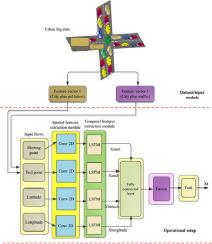当前位置:
X-MOL 学术
›
Comput. Electr. Eng.
›
论文详情
Our official English website, www.x-mol.net, welcomes your feedback! (Note: you will need to create a separate account there.)
Deep learning-based urban big data fusion in smart cities: Towards traffic monitoring and flow-preserving fusion
Computers & Electrical Engineering ( IF 4.3 ) Pub Date : 2021-01-01 , DOI: 10.1016/j.compeleceng.2020.106906 Sulaiman Khan , Shah Nazir , Iván García-Magariño , Anwar Hussain
Computers & Electrical Engineering ( IF 4.3 ) Pub Date : 2021-01-01 , DOI: 10.1016/j.compeleceng.2020.106906 Sulaiman Khan , Shah Nazir , Iván García-Magariño , Anwar Hussain

|
Abstract Objective In the last few years, several techniques and models are used for retrieving significant information from urban big data of smart cities. This research work aims at developing a data fusion-based traffic congestion control system in smart cities using a deep learning model. Methodology A hybrid model based on the convolution neural network (CNN) and long short term memory (LSTM) architectures are used for region-based traffic flow predictions in smart cities. CNN is used for the classification of spatial data while LSTM for temporal data. Conclusion The experiments used the CityPulse Traffic and CityPulse Pollution datasets, and measured root mean square error (RMSE), time consumption and accuracy. A small RMSE value of 49 and highest accuracy of 92.3% compared to other baseline models depicts the applicability of the proposed model in the region-based traffic flow prediction problems in the smart cities.
中文翻译:

基于深度学习的智慧城市城市大数据融合:走向交通监控与保流融合
摘要 目的近年来,一些技术和模型被用于从智慧城市的城市大数据中检索重要信息。本研究工作旨在使用深度学习模型开发基于数据融合的智慧城市交通拥堵控制系统。方法论 基于卷积神经网络 (CNN) 和长短期记忆 (LSTM) 架构的混合模型用于智能城市中基于区域的交通流量预测。CNN 用于空间数据的分类,而 LSTM 用于时间数据的分类。结论 实验使用了 CityPulse Traffic 和 CityPulse Pollution 数据集,并测量了均方根误差 (RMSE)、时间消耗和准确性。49 的小 RMSE 值和 92 的最高准确度。
更新日期:2021-01-01
中文翻译:

基于深度学习的智慧城市城市大数据融合:走向交通监控与保流融合
摘要 目的近年来,一些技术和模型被用于从智慧城市的城市大数据中检索重要信息。本研究工作旨在使用深度学习模型开发基于数据融合的智慧城市交通拥堵控制系统。方法论 基于卷积神经网络 (CNN) 和长短期记忆 (LSTM) 架构的混合模型用于智能城市中基于区域的交通流量预测。CNN 用于空间数据的分类,而 LSTM 用于时间数据的分类。结论 实验使用了 CityPulse Traffic 和 CityPulse Pollution 数据集,并测量了均方根误差 (RMSE)、时间消耗和准确性。49 的小 RMSE 值和 92 的最高准确度。



























 京公网安备 11010802027423号
京公网安备 11010802027423号